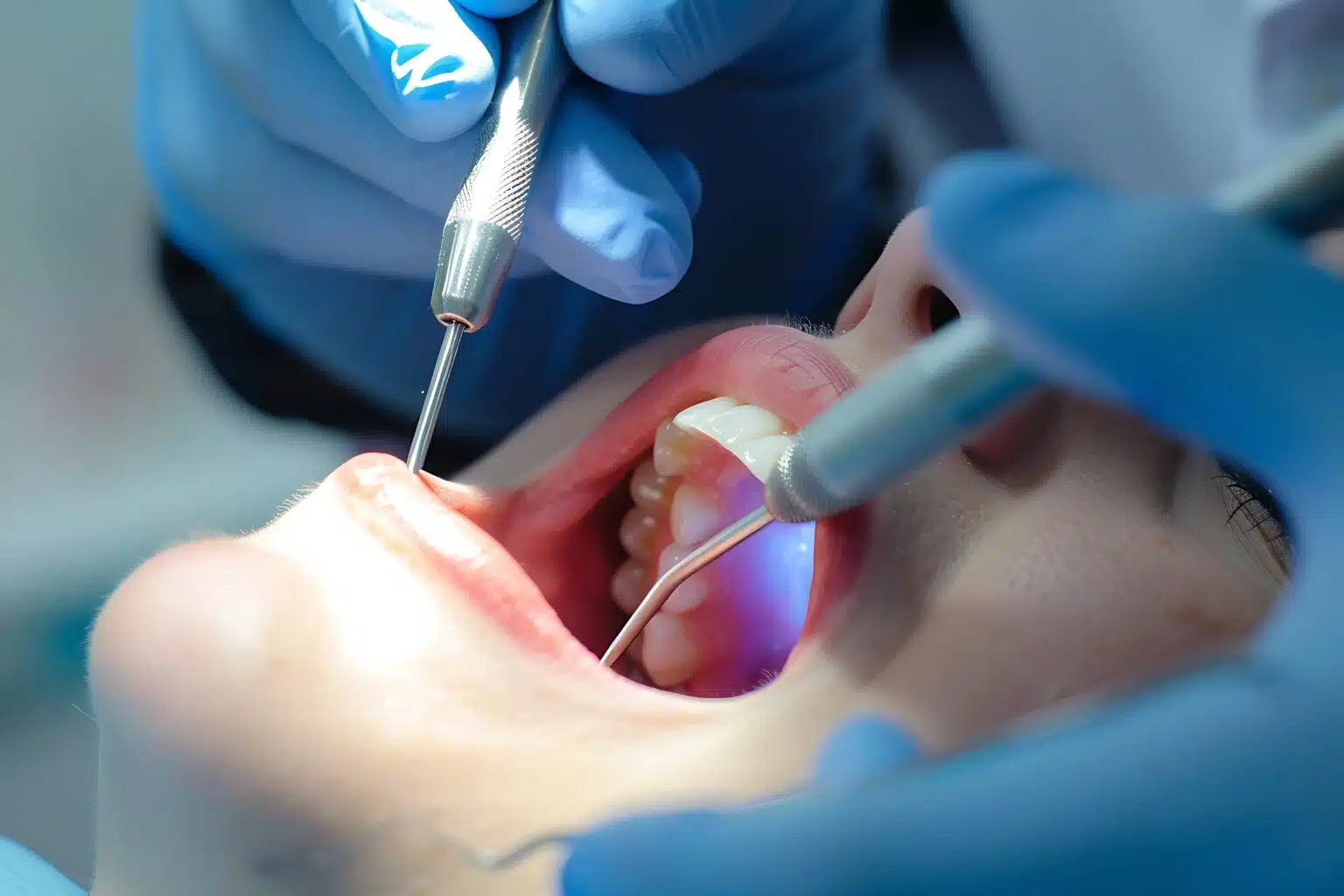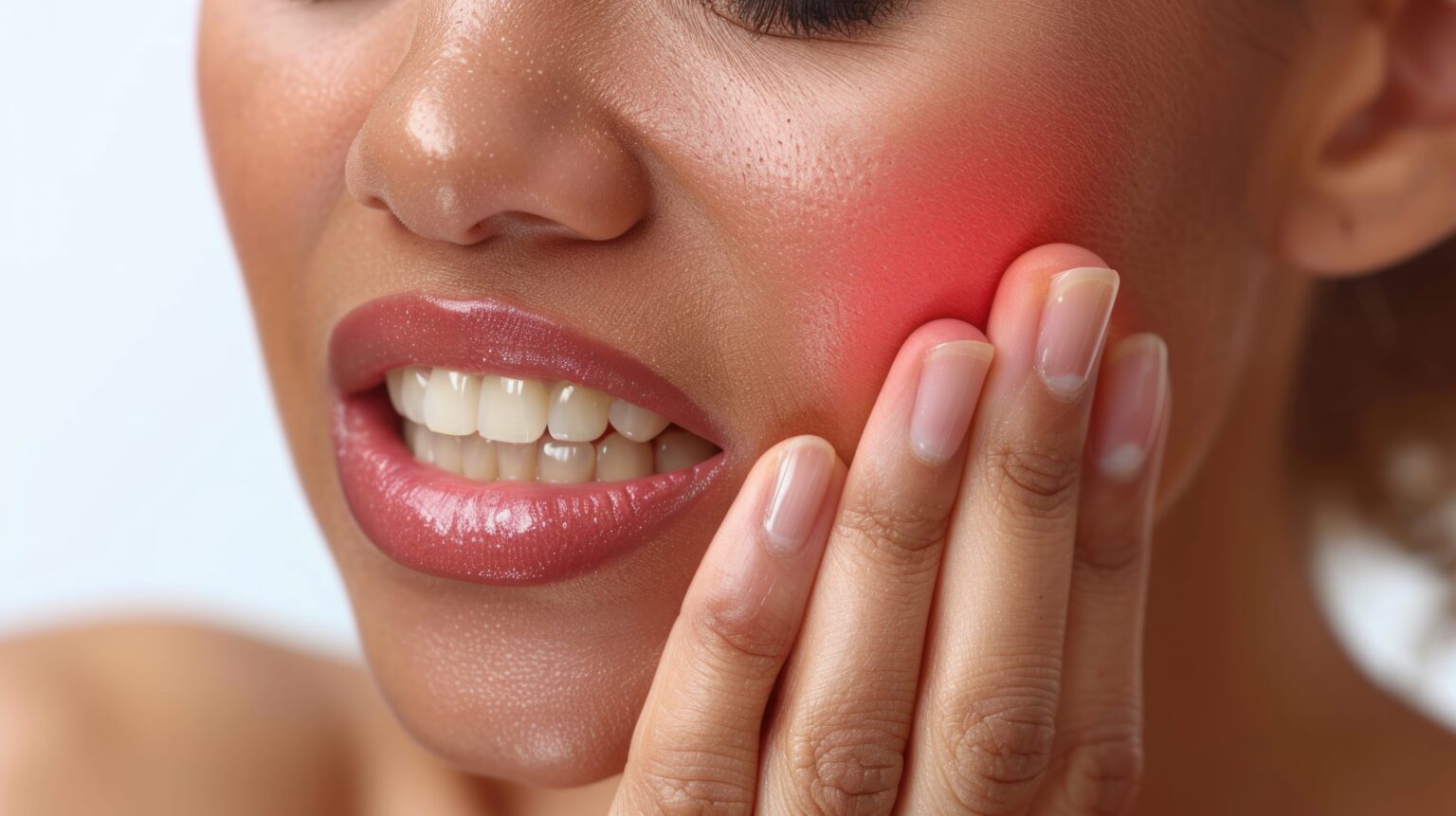Digital X-Rays
In the past, dental x-rays were captured using a film process similar to an analog photograph. With the advent of digital imaging, computerized radiography has become the dental industry standard. Digital x-rays require up to 90% less radiation than conventional film-type x-rays, which were already fairly low risk to begin with. Instead of using the traditional silver-oxide x-ray film, which must be developed & then fixed in caustic & environmentally damaging solutions, the new system takes pictures via a small electronic sensor.
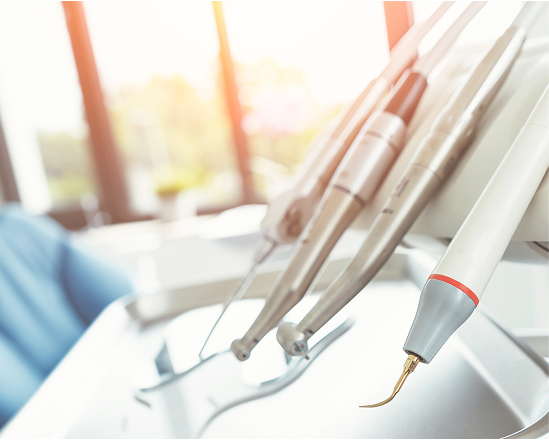
What Is A Digital X-Ray?
X-rays, also known as radiographs, have long been part of preventive care in dentistry. X-rays are a form of electromagnetic radiation that is invisible to human eyes. When scientists first discovered evidence of these electromagnetic rays, they weren’t sure what they were, so they called them x-rays, & the name stuck.
X-rays can pass through the soft tissues of the face & mouth (lips, cheeks, etc.) but are absorbed by the hard material of teeth & bone. This allows the dentist to see potential oral health issues that may not be easily visible from the outside. X-rays are used primarily to find cavities, but dentists also use them to look at tooth roots, to evaluate the health of the bone surrounding the tooth, to assess possible periodontal (gum) disease problems, to analyze tooth & jaw positioning & to keep track of development in younger patients.
Type of Dental Digital X-Rays
While there are several types of dental x-rays (including periapical & full-mouth), the most common kind of dental x-rays are called bite-wing x-rays, based on the wing shape of the films that were once used. These x-rays are done while you’re in the dental chair & capture an image of several teeth at a time, roots included. A dental team member will place a sensor in a certain part of your mouth & ask you to bite down while they aim a tube-shaped device at your face. This is the x-ray emitter, which sends the x-rays through your tissues & onto the sensor in your mouth. No light or heat will come from the emitter. There is usually no discomfort associated with getting dental x-rays.
The Advantage of Modern Digital X-Rays
One other big advantage of modern digital x-rays over the old film type is the lack of a lag time between taking the x-rays & being able to examine them. The x-ray picture of the tooth can be instantaneously transmitted onto a monitor in the treatment room so we can see your teeth & surrounding structures while you’re still in the chair. The immediacy of digital x-rays allows the dentist to assess the health of your teeth & identify potential problems right away. The Murrieta dentist can easily point out potential trouble spots to you, allowing you to see & understand your oral health condition as the dentist explains it. The digital files are also easy to share with any other dental professionals who might be involved in your care in the future.
Meet Your Murrieta Dentist
Daniel B. Pulsipher, DDS – Daniel B. Pulsipher, DDS, is a graduate of the University of Loma Linda School of Dentistry. He has also received extensive training in cosmetic dentistry, rotary endodontics and removable prosthodontics (dentures). Dr. Pulsipher is a member of the American Dental Association, Academy of General Dentistry, California Dental Association, International Association for Orthodontics & the Tri-County Dental Society.
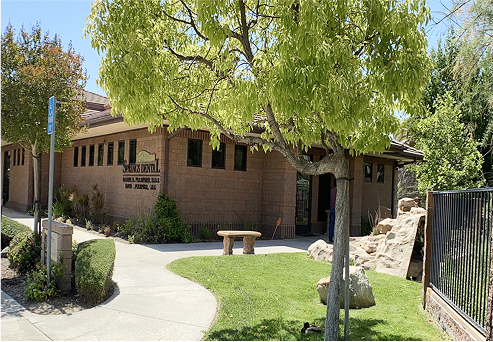





5-Star Murrieta Dental Services
We make it fun for children to visit their dentist in Murrieta.
Get relief from dental anxiety for comfortable dental procedures.
Straighten teeth with a wide-range of options from Invisalign to traditional braces.
Reshape your gum line with gum contouring to fix gummy smiles and small teeth.
Replace a missing tooth, several teeth, or an entire arch of teeth with All-on-4 dental implants.
Diagnotics and solutions for tooth and gum infections including root canals and gum disease treatment.
Visit Springs Dental

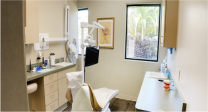

We are located in the Murrieta Springs Professional Park off Murrieta Hot Springs Road.
Hours
~ Daily lunch break 12 Noon–1pm



5-Star Google Reviews
Trustindex verifies that the original source of the review is Google. I can’t say enough great things about Springs Dental and Dr. Pulsipher! From the moment you walk in, you’re greeted with a warm, welcoming atmosphere and a team that truly cares. Dr. Pulsipher is not only incredibly skilled, but he also takes the time to explain everything and make you feel completely at ease. The entire team is professional, friendly, and genuinely dedicated to making your experience as comfortable and positive as possible. I would highly recommend anyone looking for a dentist to visit Springs Dental – you won’t be disappointed!Trustindex verifies that the original source of the review is Google. I've been a patient at Springs Dental for over 20 years. I’ve tried two other dental offices due to insurance issues, but I always come back, even when I have to pay out of pocket. Springs Dental operates with integrity, which is uncommon these days. They genuinely care about their patients rather than simply focusing on making money.Trustindex verifies that the original source of the review is Google. Great service as usual. Great staff and Dr Dan is the best!Trustindex verifies that the original source of the review is Google. Friendly staff & always with smiles to welcome their patient’s.Trustindex verifies that the original source of the review is Google. Great staff. Very thorough in all explanations of cost and procedures.Trustindex verifies that the original source of the review is Google. Great staff!!!!Trustindex verifies that the original source of the review is Google. Excellent dental care. Friendly and very competent.Trustindex verifies that the original source of the review is Google. Everyone at this dental facility treated me with so much care. I have had bad dental experiences in the past that left me terrified. I felt safe, comfortable and in capable, professional hands. This was the best dental experience I have ever had in 40 yrs! The technology in this office is like no other. They gave me a crown in a few hrs. Simply amazing! God bless Springs Dental!Trustindex verifies that the original source of the review is Google. Excellent experience!!!!
Insurance & Financing

We love your insurance and respect your budget and busy schedule. There are little to no out-of-pocket costs for most insured patients on cleanings, exams and x-rays.
0% financing is available on approved credit. While most insured families receive the majority of preventive services for FREE, we offer many different payment options, including CareCredit, so uninsured patients can still receive the dental care they need in a manner that fits their budget.
Blog Articles
Dental emergencies can strike at any time, often without warning. Recognizing the signs that require
Invisalign® aligners have become one of the most popular choices for individuals seeking discreet and
Root canal treatment is one of the most effective ways to save a tooth that
A straight, confident smile is something many people desire, but the thought of traditional metal
Just had your teeth professionally cleaned at Springs Dental? That fresh, smooth feeling you experience
What do you do when you find yourself facing a dental emergency? At Springs Dental
Frequently asked questions
How long do dentist appointments take?
Routine dental appointments, like teeth cleanings and dental checkups, take 45 minutes to an hour. Procedures like fillings, crowns, extractions, and dental implants can take up to two hours, depending on the complexity.
When should I go for an emergency dentist in Murrieta?
Come into Springs Dental for a same-day emergency dentist in Murrieta when you’re experiencing:
-
Severe tooth pain that doesn’t go away
-
A broken, chipped, or knocked-out tooth
-
Swelling in the gums, face, or jaw
-
Bleeding that won’t stop after a dental injury
-
A lost filling, crown, or dental appliance causing pain or sensitivity
-
Signs of infection, like a bad taste in your mouth, fever, or pus
If you’re ever unsure, call us and we will guide you on what to do next.
How long do dental implants last?
Dental implants can last a lifetime with good oral hygiene and regular dental checkups. A dental implant has three parts: the titanium post, the abutment, and the crown. While the post is typically permanent, the crown may need replacement after 10–15 years due to normal wear.
How long does Invisalign take in Murrieta?
Invisalign treatment takes between 6 and 18 months, depending on the complexity of your case. Mild tooth alignment issues take 6 to 12 months, while more advanced corrections can take over a year.
Do you do payment plans?
Yes, we have several options for payment plans and offer CareCredit so you never have to delay getting the dental treatment that you need.




